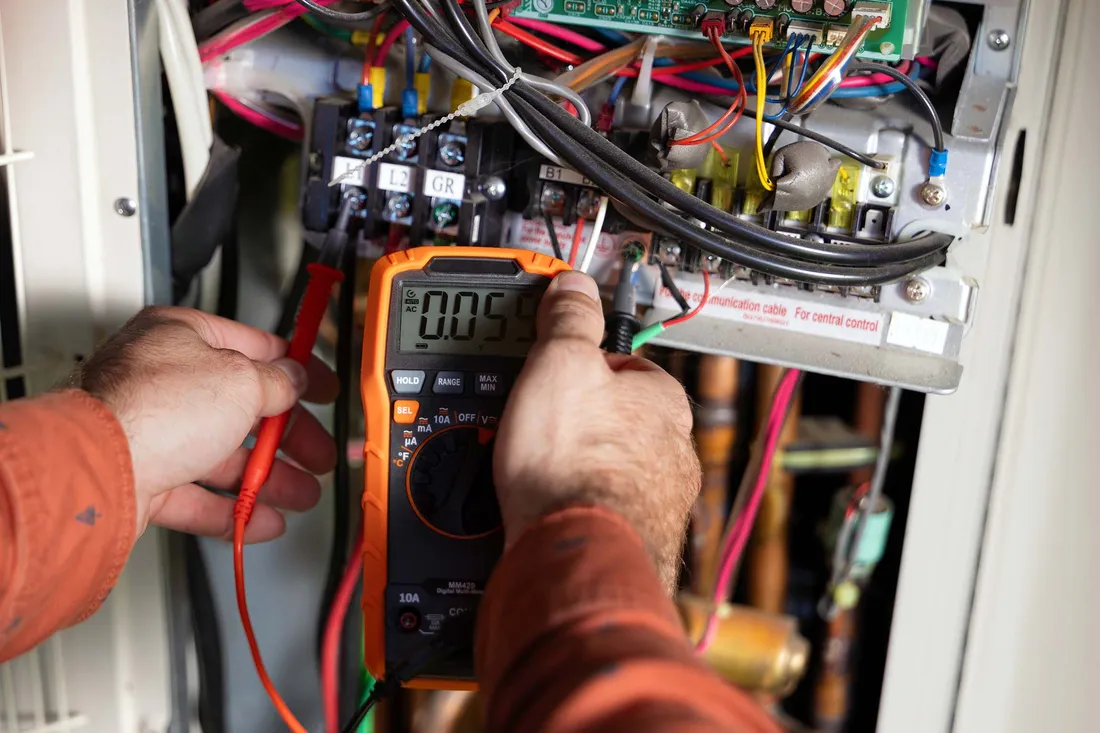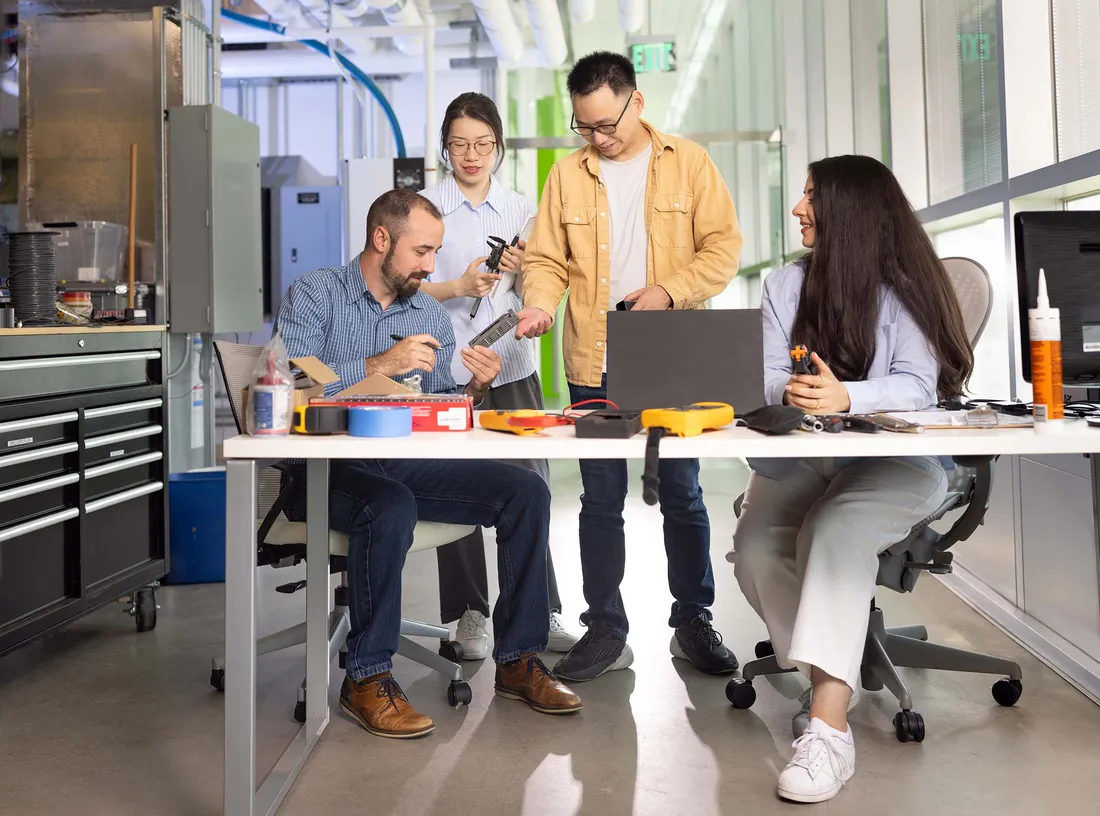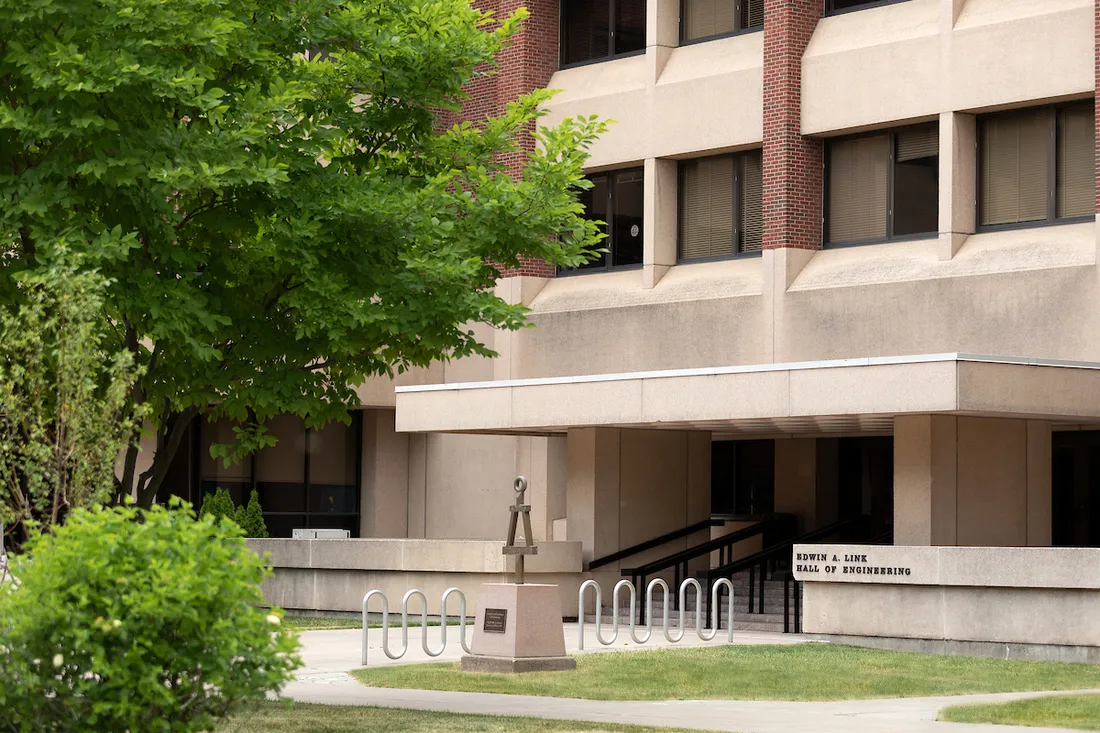
Ian Shapiro (far right), professor of practice in the College of Engineering and Computer Science, is a pioneer in the design of eco-friendly heat pumps.
Ian Shapiro has built a career on helping others. Even as his own lab awaits completion in the Syracuse University College of Engineering and Computer Science (ECS) Center of Excellence in Environmental and Energy Systems, the award-winning researcher finds ways to practice environmental stewardship and sustainability.
“The built environment reflects our culture, values and beliefs,” says Shapiro, an ECS professor of practice. “Buildings are always changing, and it’s my goal to make them more resilient and energy efficient.”
That Shapiro mostly retrofits old buildings speaks to the fluidity and temporal qualities of architecture. He considers every space a “living laboratory,” enabling him to pursue model-based analysis, fieldwork and testing. “Provided we have the right equipment, my students and I can work almost anywhere.”
Shapiro is particularly known for his contributions to the design of eco-friendly heat pumps. These systems absorb heat from the air, water or ground and then transfer it indoors to warm up a space. Conversely, heat pumps soak up indoor heat and transport it outdoors to provide air conditioning.

A student uses a digital multimeter to measure electrical and mechanical components in a heat pump system.
Based in the Department of Mechanical and Aerospace Engineering (MAE), Shapiro is using a seven-figure, five-year grant award from the U.S. Department of Energy (DOE)’s Building America Program to perform heat pump retrofits in Syracuse’s historic 15th Ward.
He also is launching the University’s Building Training and Assessment Center in collaboration with MAE Associate Teaching Professor Jackie Anderson G’11. The center will prepare students and professionals to carry out building assessments throughout Central New York.
“Our goal is to give students hands-on, real-world training,” says Shapiro, founder of Ithaca-based Taitem Engineering. “They’re our greatest resource.”
Finding a Common Goal
Building America does more than fund heat-pump demonstrations. It also will support the testing of heat pumps with the Center of Excellence in Environmental and Energy Systems, an ECS interdisciplinary center located inside 727 East Washington St., near main campus.
Such testing not only facilitates the identification of potential sources of applied energy losses in heat pumps. It also enables MAE students to conduct original, meaningful research.

Ian Herrmann G’24 (far left), a master of architecture candidate, with Wenfeng Huang, Ji Zhou G’23 and Sameeraa Soltanian-Zadeh, all of whom are Ph.D. candidates in mechanical and aerospace engineering.
Ph.D. candidate Sameeraa Soltanian-Zadeh has worked with Shapiro to identify various sources of applied energy losses. Such losses, she points out, can occur during the design, installation or operation phase of a heat pump system and reduce its efficiency.
Soltanian-Zadeh uses this data to improve the heat pump’s ratio of energy output to input, known as the coefficient of performance (COP).
“By addressing these losses, we aim to improve the heat pump's COP and break the 4.0 barrier,” she says. “This would not only enhance efficiency, but also deliver significant energy savings, especially to those least able to afford high energy costs.”
She works alongside Ph.D. candidate Ji Zhou G’23, who credits Shapiro for teaching him how to manage environmental risks from different angles. “This leads to innovative solutions and a deeper understanding of the systems that we study,” Zhou says.
Ph.D. candidate Wenfeng Huang echoes these sentiments. “We visit and assess a lot of homes and buildings, and most of the time, we find lots of issues. But that’s the beauty of people from different backgrounds working together—we have a common goal.”
From Probable to Possible

“My house is a case study,” says Herrmann (kneeling), who has designed and installed a heat pump system in his home near campus.
Shapiro’s fascination with heat pumps began during the 1981-82 recession, following a global energy crisis. Then a master’s student at Columbia, he noticed growing concerns about the environment and the need for a more sustainable future.
“That’s when I realized engineering and energy science could work together to make a difference,” recalls Shapiro, who also lectures in the School of Architecture.
While heat pumps have been around since the 1850s, the ones that Shapiro designs are intended to run on green electricity (e.g., wind, solar or hydropower) instead of fossil fuel. “This makes them highly efficient and versatile,” he adds. “The next step is to make them even more efficient and more affordable.”
Shapiro is everywhere these days. When the City and Town of Ithaca asked him to write a building energy code, he led a team that developed one of the most advanced local codes in the United States.
And with New York state on track to achieve 100% zero-emission electricity by 2040, Shapiro is tirelessly educating, advocating and consulting.

Zhou (seated) credits Shapiro for teaching him how to manage environmental risks from different angles.
“New York state has some of the cleanest air in the country and some of the toughest climate laws on record,” says the former Carrier engineer, who co-authored with Frank Ching the landmark book Green Building Illustrated, now in its second edition. “New York also has something that most states don’t have—the Niagara Power Project, one of the nation’s largest producers of hydroelectricity.”
Master of Architecture candidate Ian Herrmann G’24 applauds Shapiro’s optimism. An intern at the Center of Excellence in Environmental and Energy Systems, Herrmann has designed and installed a heat pump in his own house, along with underground ventilation ducts (aka earth tubes) that work in tandem with the pump to passively increase energy efficiency.
“My house is a case study,” says Herrmann, who also has contributed to the Building America project. “Professor Shapiro not only sees what’s probable, but also has the knowledge and experience to make it possible. He brings out the best in us students and our research.”
Adds Shapiro: “What choice do we have? Our future depends on them.”


